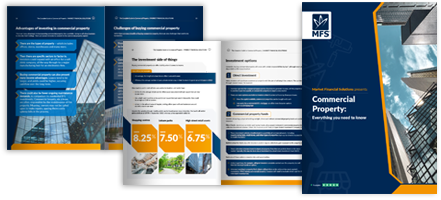Written by Zahira Fayyaz
Head of Key Accounts London & South
Market Financial Solutions are a bridging loan and buy-to-let mortgage provider and are not legal, financial, investment or tax advisers. This document is for informational purposes only and does not, and should not be considered, to constitute legal, financial, investment or tax advice or be relied upon by any person to make a legal, financial, investment or tax decision. Therefore, Investors are encouraged to seek appropriate professional advice. The information in this content is correct at time of writing.

Nothing is certain in this world except for death and taxes. We all have to pay them, often begrudgingly. They can also feel particularly costly at the moment. The government is collecting record amounts in taxation following COVID-19.
In fact, despite the government’s efforts, tax revenues, as a percentage of national income, are set to climb to 37.7% by 2028/29[1]. For context, this would be the highest level since the late 1940s, where all economic efforts were focused on the war.
Commercial property investors in the UK need to keep an eye on their tax burden, and they’ll likely want to reduce it where possible. Capital gains tax on commercial property alone can prove expensive, not to mention all the other taxes that may be applicable.
But, there are certain tax breaks and allowances available in the UK. To fully understand and utilise them, property investors should seek the expertise of accountants and tax advisors. However, there are a few key details all commercial investors can get to grips with.
Capital Gains Tax on Commercial Property (CGT)
Capital gains tax – CGT on commercial property may be levied at relatively low rates, when compared to residential charges. If an investor holds a commercial property personally, they’ll have to pay CGT on any increase in its value when they sell. If property is held and sold through a limited company, corporation tax[2] would instead be charged.
Currently, CGT is paid on the gains made a person sells[3]:
- Most personal possessions worth £6,000 or more, apart from a car
- Property that’s not their main home
- Their main home if they’ve let it out, used it for business or it’s very large
- Any shares that are not in an ISA or PEP
Capital gains tax on commercial property usually comes into play when a person disposes of “business assets”. This can include[4]:
- Land and buildings
- Fixtures and fittings
- Plant and machinery, for example a digger
- Shares
- Registered trademarks
- A business’s reputation
Who Needs to Pay CGT on Commercial Property?
It’s usually the self-employed, sole traders, or those in a business partnership that pay CGT on commercial property, where it’s applicable. Limited companies and other organisations are more likely to pay corporation tax on the profits made from selling assets.
Those who do need to pay CGT on their commercial properties may be able to take advantage of certain tax relief schemes, however. Business asset disposal relief, business asset rollover relief, incorporation relief, and gift hold-over relief[5] may all be available to commercial investors. To find out which may be applicable, investors should utilise expert guidance.
What is paid in CGT will depend on an investor’s personal income tax rate. Basic rate taxpayers will pay 18% on commercial property, with 24% being levied on higher rate, and additional rate taxpayers in 2025/26. For comparison, CGT on residential property is also 18% and 24%[6] respectively.
Capital gains tax is only paid on the gains made above the tax-free allowance rate, which is £3,000[7] (or £1,500 for trusts). Where capital gains tax on commercial property is due, it may need to be reported and paid within 60 days[8] of a sale.
If a person’s business is specifically to buy and sell property (developers for example) CGT won’t be due. Instead, income tax[9] will be paid by sole traders or partners, while limited companies will pay corporation tax.
Deductions[10] can be made from a CGT calculation where capital is used to improve a property’s prospects. For example, costs can be deducted where money is spent extending a property or covering legal expenses.
Capital Gains Tax Over the Years
Capital gains tax rates have remained relatively consistent in recent years, meaning it may be a somewhat easy tax to factor into future plans. For prior years[11], the rates were:
6 April 2008 to 5 April 2010
- Capital gains tax was charged at a flat rate of 18%.
6 April 2010 to 5 April 2011
- 18% and 28% tax rates for individuals
- 28% for trustees or for personal representatives of someone who has died
- 10% for gains qualifying for entrepreneurs’ relief
6 April 2011 to 5 April 2016
- 18% and 28% tax rates for individuals
- 28% for trustees or for personal representatives of someone who has died
- 10% for gains qualifying for entrepreneurs’ relief
6 April 2016 to 5 April 2017
- 10% and 20% tax rates for individuals (not including residential property and carried interest
- 18% and 28% tax rates for individuals for residential property and carried interest
- 20% for trustees or for personal representatives of someone who has died (not including residential property)
- 28% for trustees or for personal representatives of someone who has died for disposals of residential property
- 10% for gains qualifying for entrepreneurs’ relief
6 April 2017 onwards
- 0% and 20% tax rates for individuals (not including residential property and carried interest)
- 18% and 28% tax rates for individuals for residential property and carried interest
- 20% for trustees or for personal representatives of someone who has died (not including residential property)
- 28% for trustees or for personal representatives of someone who has died for disposals of residential property
- 10% for gains qualifying for business asset disposal relief — previously known as entrepreneurs relief
It needs to be remembered, that this is a non-exhaustive list. How much capital gains tax on commercial property is levied will depend on an investor’s individual circumstances. And of course, CGT isn’t the only tax property investors need to concern themselves with.

Income Tax
Commercial property owners are likely to pay income tax where they receive rent from tenants. Broadly, income profits from property are taxable and individuals are given a property allowance of £1,000.
Currently, people can receive an income of up to £12,570 before any income tax is levied, known as the personal allowance. Beyond this, income between £12,571 and £50,270 is taxed at 20%. Income tax is paid at 40% between £50,271 and £125,140, and anything above £125,140 is taxed at 45%.
For those who earn over £100,000, their personal allowance will be reduced by £1 for every £2 over the limit earned.
Stamp Duty Land Tax (SDLT)
Just like residential assets, SDLT is payable on the purchase of commercial properties. It will be levied on increasing portions of the property in question when £150,000 or more is paid for it. Additionally, most transactions under £150,000 will still need a SDLT return sent to the Government.
For non-residential properties, SDLT is paid on[12]:
- Commercial property, for example shops or offices
- Property that isn’t suitable to be lived in
- Forests
- Agricultural land that’s part of a working farm or used for agricultural reasons
- Any other land or property that is not part of a dwelling’s garden or grounds
- 6 or more residential properties bought in a single transaction
Currently, the first £150,000 of a property’s value will have no SDLT levied. The next £100,000 (£150,001 – £250,000) will be charged a rate of 2%. Remaining amounts above £250,000 will then have 5% levied. These rates can be used to work out what SDLT is due for a lease premium on freehold sales and transfers.
Mixed-use leaseholds pay SDLT on both the purchase price of the lease and the value of the annual rent paid. These are calculated separately and then added together. SDLT must be paid within 14 days of the transaction.
The income derived from letting a commercial property is subject to tax. However, deductions can be made for certain expenses, including letting agent fees and loan interest. HMRC offers various reliefs for both residential and commercial properties, but they must all be claimed through a SDLT return. The Government’s website[13] has guides on stamp duty, and a free-to-use[14] calculator is also available.
Council Tax
Another commercial property tax to consider is council tax. Local authority wise, business properties are generally covered by business rates, whereas council taxes are levied on residential properties.
However, some properties are assessed as having business and domestic use at the same time. Examples include pubs or shops where the owner lives on the premises. Where this occurs, owners may have to pay both business rates and council tax.
Council tax rates vary across the UK and are determined by what band they fall into. In England, council tax bands range between band A for properties valued up to £40,000[15], through to band H for properties costing more than £320,000. Council tax levels for the financial year 2025 to 2026 can be found on the government’s website[16].
The bills will differ between local authorities. But the average band D council tax in England for 2025/26 is £2,280.[17]
Value Added Tax (VAT)
As a rule, VAT is not paid on the sale or lease of a commercial property, unless it’s a new build. But, a seller or landlord can choose to charge the tax of 20% on the property[18]. The reason why this might be done is to recover VAT paid on the costs associated with the sale.
VAT and indeed, all commercial property tax concerns can be particularly complicated. While the details covered here provide an overview on the basics, investors may want to seek expert guidance to get on top of what they’ll owe to the treasury.
Other Allowances
Aside from the allowances and deductions associated with each tax, there are a few more commercial property owners may be able to take advantage of.
Capital allowance relief can be claimed on assets bought to use in a business, including equipment and machinery[19]. It can also be claimed for certain fixtures, which includes cranes, fire alarms, heating systems and the like.
Specifically, capital allowances come in the form of the annual investment allowance[20], first year allowances[21] and business cars allowances[22]. Each of these have different qualifying rules in place and provide varying levels of benefits.
Investors will need to get up to speed with the tax environment given the state of the economy. While tax bills have jumped as a result of covid spending, they’re unlikely to drop any time soon. Although we cannot guide property investors on how much they need to set aside for capital gains tax on commercial property they own, we will be there for their investment plans with fast, flexible finance.

The Complete
Commercial Property Guide
Everything you need to know
- Extensive introduction
- Lease types
- Regulations & responsibilities
- Finance
[1] https://www.ft.com/content/ec845f58-890a-4e48-99df-2993b92bb37a
[2] https://www.gov.uk/tax-when-your-company-sells-assets
[3] https://www.gov.uk/capital-gains-tax/what-you-pay-it-on
[4] https://www.gov.uk/capital-gains-tax-businesses
[5] https://www.gov.uk/capital-gains-tax-businesses/relief
[6] https://www.gov.uk/government/publications/changes-to-the-rates-of-capital-gains-tax/1cf25453-5b0c-4e7b-9165-65cf117e0af0#general-description-of-the-measure
[7] https://unividual.co.uk/financial-guides/2024-2025-tax-tables/
[8] https://www.litrg.org.uk/savings-property/capital-gains-tax/capital-gains-tax-reporting#2
[9] https://www.gov.uk/income-tax
[10] https://www.netlawman.co.uk/ia/capital-gains-tax-property
[11] https://www.gov.uk/guidance/capital-gains-tax-rates-and-allowances
[12] https://www.gov.uk/stamp-duty-land-tax/nonresidential-and-mixed-rates
[13] https://www.gov.uk/stamp-duty-land-tax/reliefs-and-exemptions
[14] https://www.tax.service.gov.uk/calculate-stamp-duty-land-tax/#!/intro
[15] https://www.which.co.uk/money/tax/council-tax/council-tax-bands-aCB0I1o9UTe1
[16] https://www.gov.uk/government/statistics/council-tax-levels-set-by-local-authorities-in-england-2025-to-2026/council-tax-levels-set-by-local-authorities-in-england-2025-to-2026
[17] https://www.gov.uk/government/statistics/council-tax-levels-set-by-local-authorities-in-england-2024-to-2025/council-tax-levels-set-by-local-authorities-in-england-2024-to-2025
[18] https://www.gov.uk/capital-allowances
[19] https://www.gov.uk/capital-allowances/annual-investment-allowance
[20] https://www.gov.uk/capital-allowances/first-year-allowances
[21] https://www.gov.uk/capital-allowances/business-cars




